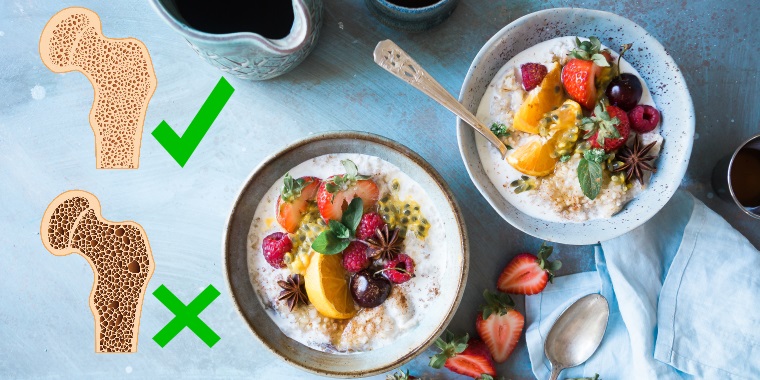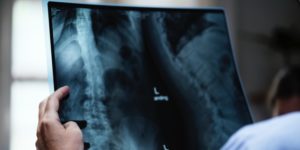Recently a young computer scientist and student at Posture School, asked me a question about how our lifestyle – in particular, caffeine – affects posture.
Thanks doctor for making this course. You mentioned caffeine in bad side of things for posture. I do not have other issues in my lifestyle but I do take a lot of caffeine. Can you please elaborate on that part? Divyendu
Most of us are a little surprised to learn that the foods (and drinks) we consume regularly, like bread, cheese, meat, sugar, coffee, and milk, may be weakening our bones.
Free Posture Crash Course!
Discover the crazy, simple 3-step formula that will teach you how to improve your posture and flexibility like a pro. You will learn how to hardwire the habit of good posture, reduce forward head and the secret way to stop slouching. It's 100% free!
Our blood is slightly alkaline (the opposite pH to acid) and that is where it prefers to be.

Acid Alkaline Diet
In order to balance the acidity of a poor diet, calcium is leached from bone to balance our body chemistry and restore ideal pH. This is a very basic explanation, but for our purposes, it’s all we really need to understand.
Foods like strong cheeses, grains containing gluten, meat, caffeine, alcohol, artificial sweeteners, soda drinks, and dairy weaken our bones over time. The body does better with more alkaline foods.
Which grains are the least acidic?
Non-glutenous grains such as brown rice, quinoa, and buckwheat (yeah, buckwheat pancakes!!) are still considered acid forming, but rank lower on the acidity scale.
Calcium Rich Foods
To maintain strong bones, we need a good supply of calcium, and contrary to popular belief, dairy isn’t the best source. Dairy is on the acidic side of the food chart and is also not the easiest form of calcium to absorb.
Makes sense – humans drink milk from human mums and cows drink milk from cow mums. Some would argue, drinking milk past infancy is unnatural. However, I still enjoy milk in my Earl Grey tea!
Dark leafy greens, seeds, and seafood are calcium-rich foods. There are plenty of yummy non-dairy food choices, full of calcium.
Vitamin D Foods
We also need Vitamin D for strong bones. We can think of the sun as food for our bones. Sunlight stimulates the production of vitamin D; so we need at least 20 minutes outdoors every day without sunscreen.
Given that the body’s ability to produce vitamin D from sun exposure declines with age, vitamin D supplements (or drops as I use from my Naturopath) are recommended for people over the age of 50. Sigh.
If you live in a northern latitude (Canada, Russia, United Kingdom and Scandinavia), you have some months of the year with limited sunshine. In these countries, vitamin D-producing sunlight can only be captured by our skin between the months of May and October. This leaves us Northerners in the cold, with declining vitamin D levels in autumn and winter. Again, vitamin D supplements are advisable.
Fish oils are a perfect source of vitamin D. This is the one supplement I think we all need. I take two teaspoons a day of high-quality fish oils. Get the best quality fish oils you can afford. I prefer liquid; most are lemon flavored and I think fairly tasty.
Bone Health & Exercise
You hear it all the time, but weight-bearing exercise is absolutely crucial to strong bones. Riding a bike and swimming are great for your heart, but they are non-weight-bearing, so they don’t help your bones as such.
Fast-paced walking with good arm swing and maybe even some Velcro weights around your ankles is an easy bone-building exercise. Running if you are under 35 (too hard on the joints over 35); weight-lifting, martial arts and dancing are all fantastic!
Good Posture
Your posture is crucial to the health of your bones. If your body is out of its symmetrical alignment then there is uneven pressure and stress on your joints and this can lead to wear and tear (osteoarthritis) in those joints.
What to do? >> Posturecise – How to Create a Healthy Habit for Life
Caffeine
Back to caffeine. Studies suggest high doses of caffeine – I consider that more than three regular-sized mugs (not three massive Starbucks sized) – contribute to loss of bone by increased urinary calcium excretion and a decreased intestinal absorption of calcium.
This overall calcium loss can influence the normal development of bone (bone density) and predispose some (often post-menopausal women), to fractures later in life.
Studies show that caffeine sources that most influence bone loss include soda and coffee. Tea may actually have a protective effect. Yeah Earl Grey!
What can you eat?
Paula’s Porridge
- ½ cup steel-cut oats
- ½ tsp cinnamon
- A handful of your favorite berries
- 1 tbsp desiccated coconut (unsweetened)
- 1 tbsp ground seeds (linseed, sesame, pumpkin, sunflower)
- Add water (or milk) to give a runny consistency
- Cook on low heat for 20 minutes (to desired thickness)
- Grate half an apple over top of cooked oats.
- Add a little milk and maple syrup if desired.
Have a yummy strong bone recipe you love? Please share in the comments below.





2 thoughts on “Coffee and Bone Health – pH, Porridge and Posture”
Hi Paula
I’ve just been reading about your Porridge recipe, and wondered if you should cook linseed. I use linseed but just grind it and sprinkle on my porridge. Which gives you best nutrition and digestion?
Many thanks
Lin
Great question Lin.
You can do either – I actually do as you do now; add the grinded seeds after I’ve cooked the porridge. But yes, you can cook with seeds and linseed. Linseed, also known as flaxseed is often used in baking. Vegan bakers often substitute a flaxseed mixture for eggs in baking recipes like pancakes, muffins, and cookies.
Yours in good nutrition,
Paula